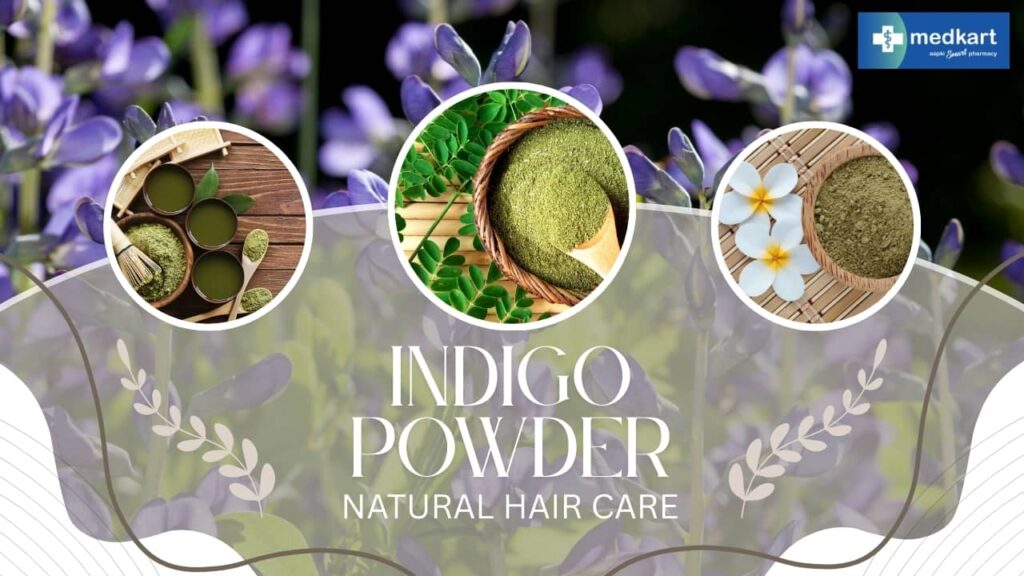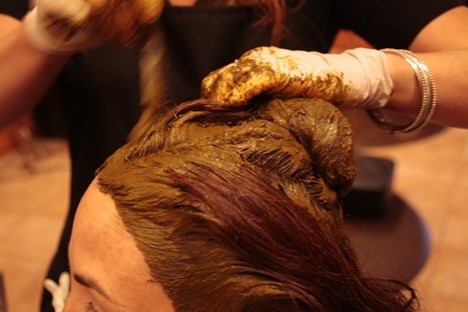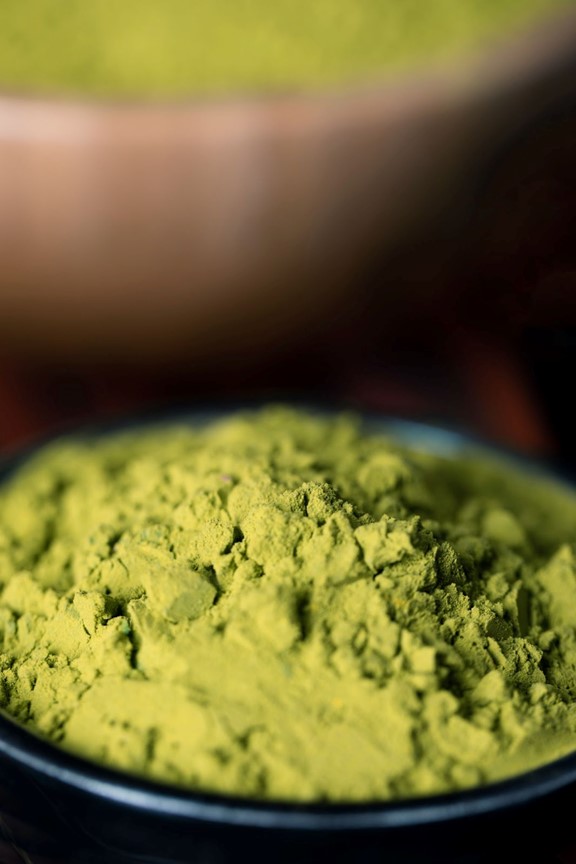Last updated on April 11th, 2025 at 01:30 pm
 Natural Hair Care: Indigo Powder In recent years, there has been a significant shift towards embracing natural ingredients in hair care routines. From coconut oil to aloe vera, people are increasingly turning to nature’s remedies for healthier, more vibrant hair. Among these natural wonders is indigo powder, an ancient hair care ingredient with a rich history and a plethora of benefits.
Natural Hair Care: Indigo Powder In recent years, there has been a significant shift towards embracing natural ingredients in hair care routines. From coconut oil to aloe vera, people are increasingly turning to nature’s remedies for healthier, more vibrant hair. Among these natural wonders is indigo powder, an ancient hair care ingredient with a rich history and a plethora of benefits.
Details About Indigo Powder
Indigo powder is derived from the leaves of the indigofera tinctoria plant, a species native to India and other parts of Asia. It has been used for centuries as a natural dye for fabrics and hair. Indigo has a long-standing history, dating back to ancient civilizations such as the Egyptians and the Mesopotamians, who used it for dyeing textiles. In India, indigo has cultural significance and is often associated with traditional practices like Ayurveda. The production of indigo powder involves harvesting the leaves of the indigofera tinctoria plant, drying and pulverizing them into a fine powder. This powder is then used in various hair care formulations.

Benefits of Using Indigo Powder for Hair Care
-
Natural Coloring Properties
Indigo powder boasts remarkable natural coloring properties, standing out as one of its primary advantages. When applied to the hair, it can impart a deep, rich color, ranging from blue-black to dark brown, depending on the original hair color and the method of application.
-
Hair Strengthening and Nourishing Effects
Indigo powder is known for its ability to strengthen hair strands, making them less prone to breakage and split ends. It also contains nutrients that nourish the hair follicles, promoting healthier growth.
-
Scalp Health Benefits
Indigo powder has soothing properties that can help alleviate scalp irritation and inflammation. It can also regulate sebum production, keeping the scalp balanced and moisturized.
-
Comparison with Synthetic Hair Dyes
Unlike synthetic hair dyes, which often contain harsh chemicals like ammonia and parabens, indigo powder is free from harmful additives, making it a safer alternative for those with sensitive skin or allergies.
How to Use Indigo Powder for Hair Care
Using indigo powder for hair care requires careful preparation and application to achieve desired results. Here’s a detailed guide on how to use indigo powder effectively:
1. Preparing Indigo Powder for Application:
- Start with high-quality indigo powder from a reputable source. Ensure that the powder is finely ground and free from any contaminants.
- Measure out the desired amount of indigo powder based on the length and thickness of your hair. For shorter hair, you’ll need less powder, while longer or thicker hair may require more.
- Place the indigo powder in a non-metallic bowl. Metal can react with the indigo and affect the color outcome.
- Gradually add warm water to the indigo powder, stirring continuously until you achieve a smooth, lump-free paste. The consistency should be similar to that of yogurt or pancake batter.
2. Application Methods:
- Before applying indigo powder to your hair, it’s essential to conduct a patch test to check for any allergic reactions or sensitivities. Apply a small amount of the mixture to a small area of skin and wait for 24 hours to observe any adverse reactions.
- Begin with clean, dry hair. Indigo powder works best on hair that is free from styling products and natural oils.
- Separate your hair into segments using either clips or hair bands. This will ensure even coverage and make the application process more manageable.
- Using gloved hands or a brush, apply the indigo paste to each section of hair, starting from the roots and working your way down to the tips. Make sure to saturate the hair thoroughly, massaging the paste into the strands to ensure even distribution.
- Once all sections of hair are coated with the indigo paste, cover your hair with a shower cap or plastic wrap to keep it moist and prevent the paste from drying out.
- Leave the indigo paste on your hair for the recommended amount of time, usually between 1 to 3 hours, depending on the desired intensity of color. You can also wrap your head with a warm towel or use a hair dryer on low heat to help the color develop more quickly.
- Once the timer ticks down, rinse your hair generously with lukewarm water, ensuring a thorough cleanse until the water flows crystal clear. Avoid using shampoo immediately after rinsing, as it can strip away the color. You can condition your hair if desired.
3. Tips for Achieving Desired Results:
- For a darker color, leave the indigo paste on your hair for a longer period of time. Keep in mind that indigo powder tends to darken over time, so the color may continue to deepen in the days following application.
- If you’re looking to cover gray hair, you may need to pre-treat your hair with henna before applying the indigo paste. This two-step process, known as the henna-indigo method, helps achieve a more vibrant and long-lasting color.
- Experiment with different indigo powder mixtures to customize the shade to your liking. You can mix indigo powder with other natural ingredients such as henna, amla, or cassia to achieve various shades of brown or black.
4. Safety Precautions:
- Always wear gloves when handling indigo powder to avoid staining your hands.
- Protect your clothing and surroundings from potential stains by wearing old clothes and covering surfaces with towels or newspapers.
- Avoid contact with the eyes and mucous membranes when applying indigo powder. In the event of contact, promptly flush with abundant water.
- Perform a strand test before applying indigo powder to your entire head to ensure that you achieve the desired color outcome and to check for any adverse reactions.
By following these steps and precautions, you can effectively use indigo powder to color and nourish your hair, achieving beautiful, natural-looking results while promoting overall hair health.

Indigo Powder: Sustainability and Ethical Considerations
-
Environmental Impact
The cultivation and production of indigo powder have a relatively low environmental impact compared to synthetic dyes. However, it’s essential to consider factors such as water usage and land management practices.
-
Fair Trade Practices and Sourcing
When purchasing indigo powder, look for brands that prioritize fair trade practices and sustainable sourcing methods. This ensures that farmers and workers are paid fair wages and that the product is produced ethically.
-
Alternatives and Eco-Friendly Options
In addition to indigo powder, there are other natural alternatives for coloring and conditioning the hair, such as herbal hair rinses and plant-based hair dyes. These options are often more eco-friendly and biodegradable than their synthetic counterparts.
Addressing Myths about Indigo Powder
One common misconception is that indigo powder is damaging to the hair. However, when used correctly and in combination with other natural ingredients, indigo powder can actually strengthen and nourish the hair, promoting healthier strands. Another myth is that indigo powder is difficult to use or messy. While it does require careful preparation and application, following proper techniques and precautions can minimize any potential mess and ensure a smooth application process. Additionally, some people believe that indigo powder only produces a blue-black color, but in reality, it can create a range of shades, from dark brown to black, depending on factors such as hair type and the method of application.
Conclusion
Indigo powder is a versatile and natural ingredient with numerous benefits for hair care. From its coloring properties to its nourishing effects on the hair and scalp, indigo powder offers a safe and effective alternative to synthetic hair dyes. By exploring the world of indigo powder, individuals can embrace a more sustainable and ethical approach to hair care, while also celebrating the rich history and cultural significance of this ancient remedy.
FAQs On Natural Hair Care: All About Indigo Powder
1. Is indigo powder safe to use on all hair types, including chemically treated hair?
Answer: Yes, indigo powder is generally safe for all hair types, including chemically treated hair. However, it’s essential to perform a patch test before full application to check for any adverse reactions.
2. How long does the color from indigo powder last, and does it cover gray hair effectively?
Answer: The longevity of indigo powder color can vary depending on factors such as hair porosity and maintenance routine, but it typically lasts several weeks to months. When used in combination with henna, indigo powder can effectively cover gray hair and provide long-lasting color.
3. Can indigo powder be used on its own, or does it need to be mixed with other ingredients like henna?
Answer: Indigo powder can be used on its own for a blue-black color, but for varying shades of brown or black, it’s often mixed with henna or other natural ingredients like amla or cassia. Mixing indigo powder with henna can also enhance its conditioning properties and improve color adherence.
Buy Medicine – Upto 85% Discount
